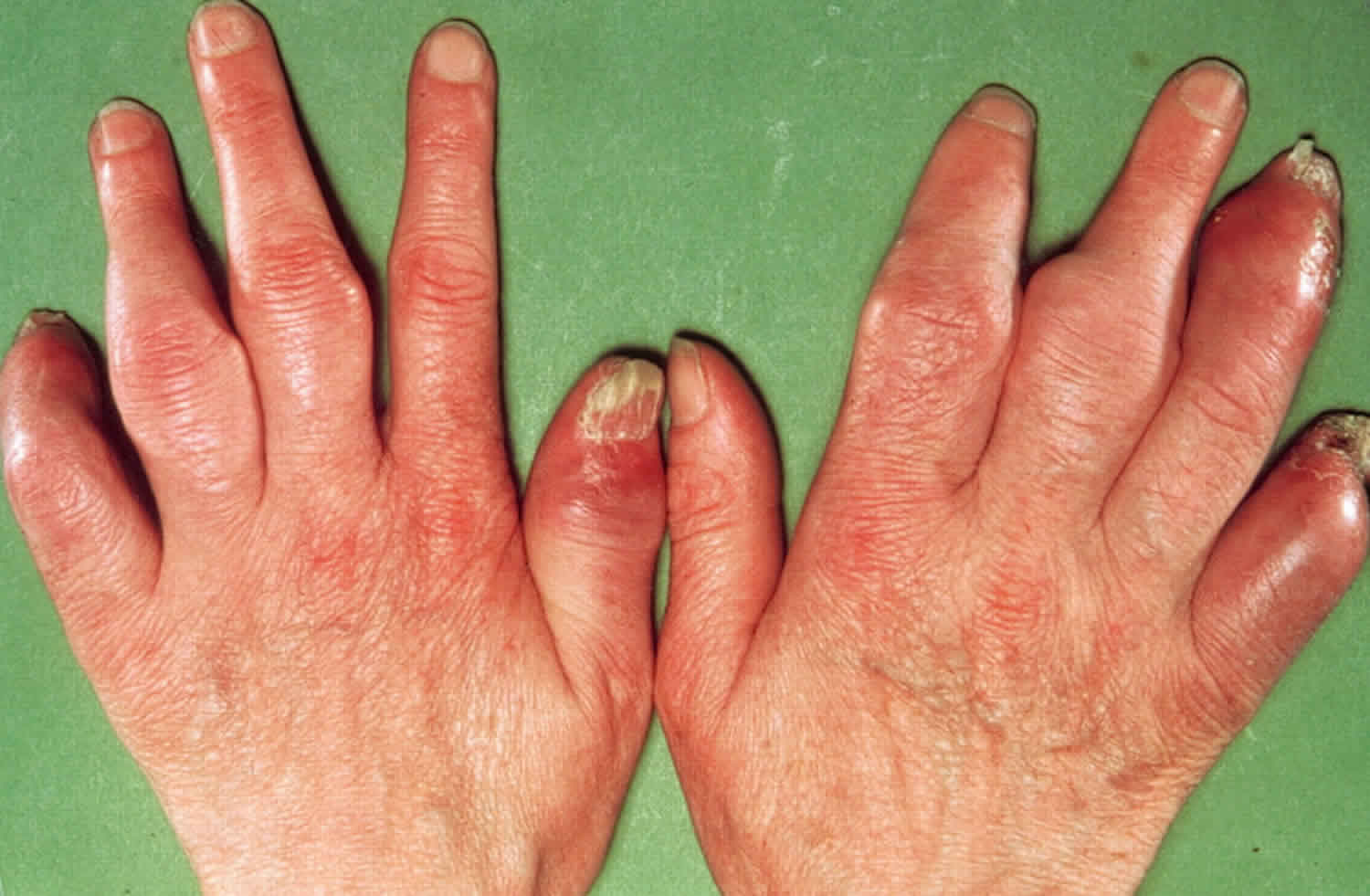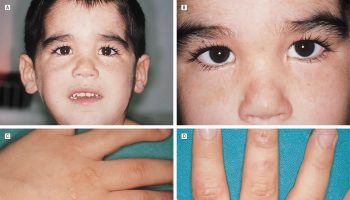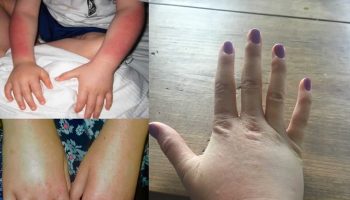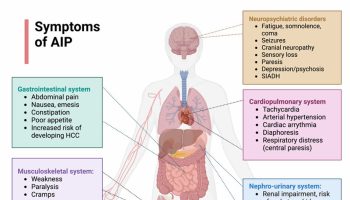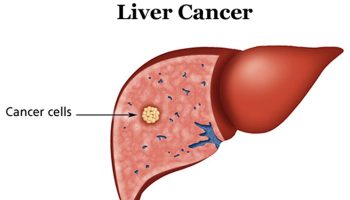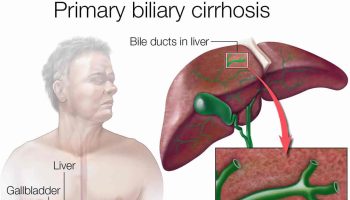What is dactylitis
The term ‘dactylitis’ indicates inflammation and a sausage-like swelling along the entire length of the finger and/or toe that is attributed to inflammatory infectious or non-infectious causes as well as certain contagious agents. Dactylitis inflammatory process may affect only the bone (as in sickle cell dactylitis, syphilitic dactylitis), the bone, soft tissues, and skin (as in tuberculous dactylitis, sarcoid dactylitis), or only the skin as in blistering distal dactylitis. Dactylitis is one symptom that helps differentiate psoriatic arthritis from rheumatoid arthritis, in which the swelling is usually confined to a single joint.
Some people might hear “psoriasis” and think of the skin disease that causes itchy, scaly rashes and crumbling nails. It’s true, psoriasis is an autoimmune disease that primarily affects the skin. But about 30 percent of people with psoriasis also develop a form of inflammatory arthritis called psoriatic arthritis. Like psoriasis, psoriatic arthritis is an autoimmune disease, meaning it occurs when the body’s immune system mistakenly attacks healthy tissue, in this case the joints and skin. The faulty immune response causes inflammation that triggers joint pain, stiffness and swelling. The inflammation can affect the entire body and may lead to permanent joint and tissue damage if it is not treated early and aggressively.
Most people with psoriatic arthritis have skin symptoms before joint symptoms. However, sometimes the joint pain and stiffness strikes first. In some cases, people get psoriatic arthritis without any skin changes.
The disease may lay dormant in the body until triggered by some outside influence, such as a common throat infection. Another theory suggesting that bacteria on the skin triggers the immune response that leads to joint inflammation has yet to be proven.
According to the Annals of Rheumatic Disease, between 6 and 42 percent of people who have psoriasis will develop psoriatic arthritis. The disease usually appears between the ages of 30 and 55 in people who have psoriasis, but it can be diagnosed during childhood. Unlike many autoimmune diseases, men and women are equally at risk for developing psoriatic arthritis.
There are five types of psoriatic arthritis:
- Symmetric psoriatic arthritis. This makes up about 50 percent of psoriatic arthritis cases. Symmetric means it affects joints on both sides of the body at the same time. This type of arthritis is similar to rheumatoid arthritis.
- Asymmetric psoriatic arthritis: Often mild, this type of psoriatic arthritis appears in 35 percent of people with the condition. It’s called asymmetric because it doesn’t appear in the same joints on both sides of the body.
- Distal psoriatic arthritis: This type causes inflammation and stiffness near the ends of the fingers and toes, along with changes in toenails and fingernails such as pitting, white spots and lifting from the nail bed.
- Spondylitis: Pain and stiffness in the spine and neck are hallmarks of this form of psoriatic arthritis.
- Arthritis mutilans: Although considered the most severe form of psoriatic arthritis, arthritis mutilans affects only 5 percent of people who have the condition. It causes deformities in the small joints at the ends of the fingers and toes, and can destroy them almost completely.
Dactylitis causes
The term ‘dactylitis’ indicates inflammation and a sausage-like swelling along the entire length of the finger or toe that is attributed to inflammatory infectious or non-infectious causes as well as certain contagious agents. Dactylitis inflammatory process may affect only the bone (as in sickle cell dactylitis, syphilitic dactylitis), the bone, soft tissues, and skin (as in tuberculous dactylitis, sarcoid dactylitis), or only the skin as in blistering distal dactylitis.
The cause of psoriatic arthritis is unknown. Experts believe some people may be predisposed to an autoimmune disease like psoriatic arthritis. In fact, studies show a stronger genetic or family link to this particular disease than other autoimmune rheumatic diseases. About 40 percent of people who are diagnosed with psoriatic arthritis and psoriasis have family members affected by the disease.
Not everyone who has psoriasis develops psoriatic arthritis. Psoriasis is not infectious, but the disease might be triggered by a strep throat. In addition to infections, researchers believe psoriatic arthritis also can be triggered by extreme stress or an injury that makes the immune system go into overdrive in people who are genetically more likely to get the disease.
Psoriatic arthritis symptoms
Symptoms of psoriatic arthritis vary among different people. Many are common to other forms of arthritis, making the disease tricky to diagnose. Here’s a look at the most common symptoms – and the other conditions that share them.
Painful, swollen joints
Psoriatic arthritis typically affects the ankle, knees, fingers, toes and lower back. Pain in the lower back is also a symptom of ankylosing spondylitis, a form of inflammatory arthritis that causes the vertebrae to fuse, or joint together. Also, the joint at the tip of the finger may swell, making it easy to confuse with gout, a form of inflammatory arthritis that typically affects only one joint.
Stiffness
Joints tend to be stiff either first thing in the morning or after a period of rest. However, people with osteoarthritis often have similar stiffness.
Dactylitis
Many people with psoriatic arthritis have dactylitis, a sausage-like swelling along the entire length of their fingers or toes. This symptom is one that helps differentiate psoriatic arthritis from rheumatoid arthritis, in which the swelling is usually confined to a single joint.
Tendon or ligament pain
People with psoriatic arthritis often develop enthesitis, or tenderness or pain where tendons or ligaments attach to bones. This commonly occurs at the heel (Achilles tendinitis) or the bottom of the foot (plantar fasciitis), but it can also occur in the elbow (tennis elbow). Each of these conditions could just as easily result from sports injuries or overuse as from psoriatic arthritis.
Skin rashes and nail changes
Psoriatic arthritis occurs with psoriasis so skin symptoms include thick, red skin with flaky, silver-white scaly patches. Nails may become pitted or infected-looking, or even lift from the nail bed entirely. These symptoms are unique to psoriasis and psoriatic arthritis, actually helps doctors confirm a diagnosis.
Fatigue
People with psoriatic arthritis often experience general feelings of fatigue. This symptom is a common feature of rheumatoid arthritis.
Reduced range of motion
The inability to move joints and limbs as freely as before is a sign of psoriatic arthritis and most other forms of arthritis.
Eye problems
People with psoriatic arthritis may get inflammation of the eyes that can cause redness, irritation and disturbed vision (uveitis) or redness and pain in tissues surrounding the eyes (conjunctivitis, or “pink eye”).
Flares
Many people experience frequent periods of increased disease activity and symptoms, called flares, while others have only infrequent flares. This waxing and waning of symptoms is frequently seen with rheumatoid arthritis, as well.
Psoriatic arthritis is closely linked with inflammatory bowel disease, especially the form called Crohn’s disease. It causes diarrhea and other gastrointestinal problems The inflammation that causes psoriatic arthritis may also harm the lungs, causing a condition known as interstitial lung disease that leads to shortness of breath, coughing and fatigue. Chronic inflammation can damage blood vessels, increasing the risk for heart attacks and strokes. People with psoriatic arthritis often develop metabolic syndrome, a group of conditions that include obesity, high blood pressure and poor cholesterol levels. Other problems that can accompany psoriatic arthritis include depression, an increased risk for osteopenia (thinning bones) and osteoporosis, and a higher-than-average risk of developing gout.
Psoriatic arthritis diagnosis
Diagnosing psoriatic arthritis can be a tricky process because its symptoms frequently mimic those of other forms of inflammatory arthritis, such as rheumatoid arthritis (RA) and gout. It can also be confused with osteoarthritis (OA), the most common form of arthritis.
For a proper diagnosis, the primary care doctor will likely provide a referral to a rheumatologist, a type of doctor who specializes in arthritis and musculoskeletal diseases. A diagnosis is based on many things, including a thorough medical history and the results of a physical examination and medical tests.
Medical History
Because certain conditions can be inherited, the doctor will ask questions about the health history of the patient and his or her relatives.
Additional information needed to help diagnose psoriatic arthritis includes:
- A description of the symptoms
- Details about when and how the pain or other symptoms began
- Location of the pain, stiffness or other symptoms
- How the symptoms affect the patient’s daily life
- Details about medical problems that could be causing these symptoms and a list of currently used medications
Physical Exam
The rheumatologist will perform a physical exam, looking for swelling and inflammation of the joints. He’ll also check for signs of psoriasis on the skin or abnormalities on fingernails and toenails. Keep in mind that psoriasis isn’t always readily visible. It can hide on the scalp, behind the ears, in the belly button and in the groove between the buttocks.
Diagnostic Tests
The doctor may order X-rays to detect changes to the bones or joints. Blood tests will be done to check for signs of inflammation. They include C-reactive protein and rheumatoid factor (RF). People with psoriatic arthritis are almost always RF-negative. If blood tests are positive for rheumatoid factor, the doctor should suspect rheumatoid arthritis first.
A blood test to measure the sedimentation or erythrocyte sedimentation rate (ESR) is often done. The higher the ESR 1, the greater the level of inflammation in the body. The doctor may also test joint fluid to exclude gout or infectious arthritis.
Because psoriatic arthritis can be tricky to diagnose, people sometimes are initially told they have another form of arthritis only to find out later they have psoriatic arthritis.
Ruling Out Other Conditions
The symptoms of psoriatic arthritis can mimic other conditions. Common misdiagnoses include osteoarthritis, rheumatoid arthritis and gout. Below are some tips to help avoid a psoriatic arthritis misdiagnosis.
- If a single joint becomes swollen and extremely painful almost overnight, it’s probably gout. Gout pain comes on rapidly and is intense.
- If there is little or no joint swelling, osteoarthritis is the most likely diagnosis. Osteoarthritis pain tends to be felt after activity.
- If joint pain affects the same joint on both sides of the body (is symmetrical), it could be RA. Joint pain in psoriatic arthritis is usually asymmetrical, meaning it’s felt on one side of the body. For example, if one knee is affected, the other likely is not.
If joint pain is worse for more than a few minutes in the morning, or after inactivity, consider psoriatic arthritis or rheumatoid arthritis.
If swelling involves the full length of the fingers or toes, think psoriatic arthritis. This condition is called dactylitis, or “sausage fingers.”
If there are psoriasis symptoms and nail pitting first, followed by joint pain, psoriatic arthritis is likely the culprit, particularly if there is joint swelling. A person can have psoriasis and a form of arthritis that isn’t psoriatic arthritis.
Dactylitis treatment
There are several over-the-counter (OTC) and prescription medicines for psoriatic arthritis. Some treat symptoms of both psoriasis and psoriatic arthritis, others target skin problems, yet others help with joint issues. Many can also modify the disease course by disrupting the overactive immune system.
Medications for psoriatic arthritis
- NSAIDs. Nonsteroidal anti-inflammatory drugs (NSAIDs) are usually taken by mouth, although some can be applied directly to the skin. These medicines reduce inflammation along with pain and swelling. Among the most well-known over-the-counter (OTC) NSAIDs are ibuprofen (Advil, Motrin) and naproxen sodium (Aleve), although there are many others. More than a dozen prescription NSAIDs also are available. The most notable risks of NSAIDs are an increased risk of heart attack and stroke, along with stomach irritation and bleeding that could become severe.
- Corticosteroids. These drugs are designed to mimic the anti-inflammatory hormone cortisol, which is normally made by the body’s adrenal glands. Corticosteroids taken by mouth, such as prednisone, can help reduce inflammation, but long-term use can lead to side effects such as facial swelling, weight gain, osteoporosis and more. Directly injecting corticosteroids into affected joints can provide temporary inflammation relief.
- Topical treatments. Topical medicines are applied directly to the skin to treat scaly, itchy rashes due to psoriasis. Available in creams, gels, lotions, shampoos, sprays or ointments, these drugs are available OTC and by prescription. OTC ones include salicylic acid, which helps lift and peel scales, and coal tar, which may slow rapid cell growth of scales and ease itching and inflammation. Prescription topicals contain corticosteroids and/or vitamin derivatives. Common prescription ones include calcitriol, a naturally occurring form of vitamin D3; calcipotriene, a synthetic form of vitamin D3; calcipotriene combined with the corticosteroid betamethasone dipropionate; tazarotene (a vitamin-A derivative); and anthralin, a synthetic form of chrysarobin, a substance derived from the South American araroba tree.
- Light therapy. Another option for treating psoriasis is phototherapy, or light therapy. In light therapy, the skin is regularly exposed to ultraviolet light. For safety reasons, this is done under medical supervision.
- DMARDs. Disease-modifying antirheumatic drugs (DMARDs) are a varied group of medications that suppress inflammation-causing chemicals to prevent joint damage and reduce symptoms. Most are taken by mouth. According to the American College of Rheumatology, DMARDs most commonly prescribed for psoriatic arthritis are methotrexate, sulfasalazine, cyclosporine and leflunomide. Azathioprine may also be prescribed. Apremilast is a newer DMARD approved in 2014. It works by blocking an enzyme called phosphodiesterase 4 (PDE4), which is linked to inflammation. Studies have shown it reduces the number of tender and swollen joints.
- Biologics. Technically a subset of DMARDs, biologics are complex drugs that stop inflammation at the cellular level. They are usually given by injection or infusion. Three types of biologics are approved to treat psoriatic arthritis. They include:
- Anti-tumor necrosis factor-alpha (TNF-alpha) drugs that block a specific protein produced by immune cells that signals other cells to start the inflammatory process. These include etanercept, adalimumab, golimumab, infliximab and certolizumab.
- Selective co-stimulation moderators that interfere with the activation of white blood cells called T cells, preventing immune system reactions that result in inflammation. The only drug in this class is abatacept.
- IL-inhibitors that block pro-inflammatory proteins called interleukins. The drug ustekinumab specifically blocks IL-12 and -23.
While biologics can be very effective, they suppress the immune system and raise the risk of infection.
Psoriatic arthritis self care
Taking a proactive part in treatment is an important step in managing psoriatic arthritis symptoms. This process is called self management or self care. It can help the person ease the severity of flares and stay healthier overall.
Here are some everyday self-care strategies for people with psoriatic arthritis.
Get Moving
- Regular physical activity particularly aerobic exercises like walking or biking, can keep affected joints flexible and improve overall health and wellness. Excess weight puts added stress on joints, so it’s important to shed any extra pounds.
Get Proper Nutrition
- A healthy, balanced diet — one rich in fresh foods like fruits and vegetables and low in sugar, fat and salt — can help people with psoriatic arthritis boost their overall health and control their weight. Eating too many unhealthy foods may increase feelings of fatigue and sluggishness.
Limit Alcohol
- Drinking too much alcohol can interfere with medications or increase the side effects of some drugs. Ask a doctor if it is safe to drink alcohol when receiving treatment for psoriatic arthritis.
Quit Smoking
- Smoking is bad for a person’s health. It’s always a good time to stop, or cut back on, smoking.
Manage stress
- Excess stress can worsen flares and make it harder to manage daily activities. Meditation, listening to soothing music, walking, joining a support group and therapeutic exercise such as yoga and tai chi can help reduce stress.
Protect The Skin
- Keeping skin moisturized is helpful in treating psoriasis. Regular use of lotions or creams containing aloe vera, jojoba, capsaicin or zinc pyrithione may help lubricate affected skin. Taking short, warm (not hot) baths using oilated oatmeal, bath oil, Dead Sea or Epsom salts, followed by moisturizer application, may also soothe skin. Make a habit of applying moisturizers following daily showers or baths, or after swimming. Occlusion is a method for removing scales on the skin, where a moisturizer or topical medication is applied to the skin and wrapped with plastic, nylon dressing or cotton. The moisturizer softens dry areas. Occlusion should not be done with steroidal creams. Consult a doctor before using such products or methods.
Try Light Therapy
- Consistent, measured exposure to ultraviolet light, called phototherapy, has been shown to ease scaly psoriasis rashes. Phototherapy sessions are controlled treatments performed in a doctor’s office or at home using special ultraviolet light. Short (5 to 10 minute) intervals of natural sunlight can also be beneficial – just take care to avoid sunburn by applying sunblock to unaffected areas.
Wash and Dress With Care
- Wash clothes with fragrance-free detergent and fabric softeners to reduce risk of skin reactions. Choose clothing that is loose-fitting to avoid scratching scaly areas of skin. Items made of natural, soft fibers like cotton may be less irritating to skin and cooler in warm months.
Blistering distal dactylitis
Blistering distal dactylitis is a localized bacterial infection manifesting as fluid-filled lesions over the fingers especially in children 2. Classically, blistering distal dactylitis is localized to the volar fat pad of the distal phalanx of the digits presenting as a medium to large non-tender blister filled with a thin, white fluid. Bacterial cultures from this fluid most commonly grow group A beta-hemolytic Streptococcus 3.
Blistering distal dactylitis presents as a single, or sometimes multiple, oval-shaped tense bullae containing seropurulent fluid on an erythematous base over the palmar aspect of the finger which may extend dorsally to involve lateral nail folds. The lesions usually range in size from 10 mm to 30 mm. Darkening of the skin may be noticed a few days before the actual onset of the blisters. The bull progresses to form bullae with central erosions or simple erosion with adherent layers of skin. Some reports have shown that the infection may also affect the toes. Even more rarely, lesions might affect the palmar or dorsal hand and feet.[5][6]The presence of a thick stratum corneum and also stratum lucidum over palms and soles could be the reason for the eruption of blisters in blistering distal dactylitis. Multiple blisters appear to be a predictor of blistering distal dactylitis triggered by Staphylococcus aureus. Some patients may complain of pain and tenderness in the area, and they may be febrile. Bacterial infections of the eye, upper respiratory tract, the gastrointestinal or genitourinary tract may occasionally coexist which underlines the need for systemic antibiotic therapy.Isolated case reports of recurrent blistering distal dactylitis associated with an ingrown toenail and cases coexisting with herpetic whitlow have been described. Anthropophilic transmission of blistering distal dactylitis has also been reported.
Children between the ages of two and 16 years of age are most commonly affected. There have been case reports of blistering distal dactylitis occurring in children younger than one year of age and even in adults. blistering distal dactylitis has also been reported in immunocompromised individuals, including human immunodeficiency virus (HIV)-positive cases and in people with diabetes.
The diagnosis and management of blistering distal dactylitis can be challenging and is best done with a multidisciplinary team that includes a nurse practitioner, primary care provider, an emergency department physician, and an infectious disease expert. The key is to drain and obtain fluid for culture from the bullae. However, it is important to know that blistering distal dactylitis can coexist with and may be secondary to clinically indiscernible bacterial infections of the upper and lower respiratory or gastrointestinal tract, which underlines the need for systemic antibiotic therapy. Blistering distal dactylitis is always treated with oral antibiotics and the pharmacist should ensure that there is compliance with therapy. For those treated promptly the outcomes are good but when there is a lack of compliance with antibiotics, the infection can have an aggressive course 4.
Blistering distal dactylitis usually resolves rapidly with the appropriate antibiotics and local dressing without any complications or sequelae. There is a report of digital amputation post blistering distal dactylitis which emphasizes the need to treat infections aggressively, especially in HIV positive individuals.
What causes blistering distal dactylitis
Typically, blistering distal dactylitis is caused by group A beta-hemolytic Streptococcus infection 3.
Group B streptococcus, Staphylococcus aureus, and more recently even methicillin-resistant Staphylococcus aureus (MRSA) have been reported as etiological agents 5. Hays and Mullard 3. proposed that autoinoculation of the finger from nose-picking was the instigating cause of blistering distal dactylitis in children, although any reservoir of the bacteria could be a source of infection.
The organisms tend to invade the skin through open wounds from insect bites, traumatic cuts, erosions, and burns or through abnormalities of skin appendages such as nails. The actual pathogenesis of the blister is not very clear. Streptococcus does not seem to cause the development of bullae, through a toxin-mediated or another indirect mechanism. S. aureus, however, does secrete toxins that can cause epidermal splitting. It should be noted that Streptococcus and Staphylococcus aureus-associated blistering distal dactylitis are clinically indistinguishable, and this makes the role of toxins in blistering distal dactylitis uncertain.
Blistering distal dactylitis diagnosis
The fluid can be collected after puncturing or deroofing the blister. Fluid is then examined for gram-stain smear and bacterial culture and sensitivity for confirmation of the diagnosis and for starting appropriate antibiotics 6.
A histopathological examination has not been done in published case reports, but Weedon writes that the blistering results from massive subepidermal edema. The presence of erosions in some cases suggests that the split in the epidermis is superficial 7. The severe necrosis that occurs in toxic shock syndrome, which results in the formation of acral bullae, has not been described in blistering distal dactylitis.
Blistering distal dactylitis treatment
If bullae are tense and tender, incision and drainage followed by wet dressing are recommended. Bullae may also be deflated with a sterile needle, leaving the blister roof intact. Wet compresses are helpful for rapid resolution of the bulla followed by topical antibiotics. blistering distal dactylitis can coexist with and may be secondary to clinically indiscernible bacterial infections of the upper and lower respiratory or gastrointestinal tract, which underlines the need for systemic antibiotic therapy.
Topical antibiotics alone are inadequate in most cases. Systemic antibiotics are commonly recommended to avert the development of new lesions and spread of infection to other sites. Oral antibiotics also decrease the chances of spread to other people. B-Lactamase-resistant antibiotics (flucloxacillin, dicloxacillin, cloxacillin) are the drug of choice because S. aureus is often resistant to penicillin. For cases which show MRSA positivity along with systemic signs, intravenous vancomycin is indicated.
- erythrocyte sedimentation rate[↩]
- Kowtoniuk R, Bednarek R, Maroon M. Blistering Distal Dactylitis. JAMA Dermatol. 2018 Dec 01;154(12):1480.[↩]
- Anjaneyan G, Kaliyadan F. Blistering Distal Dactylitis. [Updated 2019 Mar 9]. In: StatPearls [Internet]. Treasure Island (FL): StatPearls Publishing; 2019 Jan-. Available from: https://www.ncbi.nlm.nih.gov/books/NBK470327[↩][↩][↩]
- Rhody C. Bacterial infections of the skin. Prim. Care. 2000 Jun;27(2):459-73.[↩]
- Krooks J, Weatherall A, Markowitz S. Complete Resolution of Mycobacterium marinum Infection with Clarithromycin and Ethambutol: A Case Report and a Review of the Literature. J Clin Aesthet Dermatol. 2018 Dec;11(12):48-51.[↩]
- Fretzayas A, Moustaki M, Tsagris V, Brozou T, Nicolaidou P. MRSA blistering distal dactylitis and review of reported cases. Pediatr Dermatol. 2011 Jul-Aug;28(4):433-5.[↩]
- Olivieri I, Scarano E, Padula A, Giasi V, Priolo F. Dactylitis, a term for different digit diseases. Scand. J. Rheumatol. 2006 Sep-Oct;35(5):333-40.[↩]
